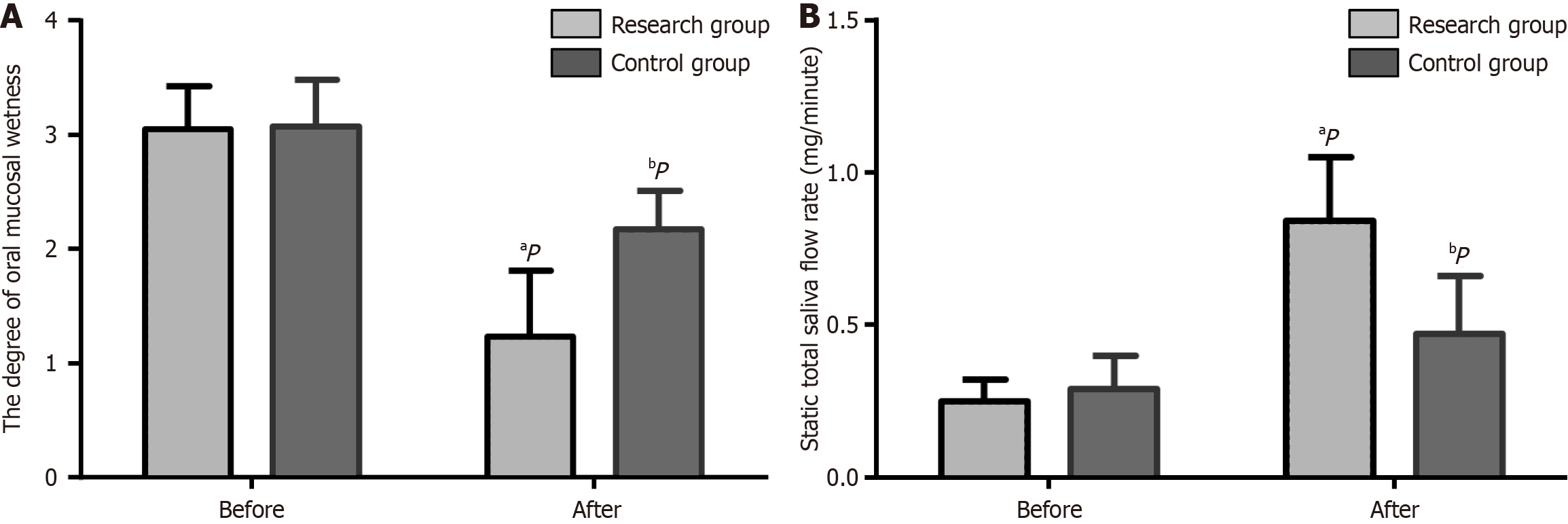Copyright
©The Author(s) 2025.
World J Gastrointest Surg. Mar 27, 2025; 17(3): 100185
Published online Mar 27, 2025. doi: 10.4240/wjgs.v17.i3.100185
Published online Mar 27, 2025. doi: 10.4240/wjgs.v17.i3.100185
Figure 2 Evaluation of the oral mucosal wetness scores and the unstimulated whole salivary flow rate before and after nursing.
A: The oral mucosal wetness scores. The oral mucosal wetness score of both groups was statistically decreased after the execution of the nursing measures, with that of the research group being significantly lower compared to the control group after nursing care. The scoring range of oral mucosal wetness degree is from 1 to 4, with a higher score signifying a reduced level of oral mucosal wetness; B: The unstimulated whole salivary flow rate. The unstimulated whole salivary flow rate of both groups was significantly increased after nursing, with a more significant increase in the research group vs the control group. The unstimulated whole salivary flow rate was measured by the cotton swab method. aP < 0.01 vs before care; bP < 0.05 vs control.
- Citation: Chen L, Li BX, Gan QZ, Guo RG, Chen X, Shen X, Chen Y. Enhanced recovery after surgery-based evidence-based care plus ice stimulation for thirst management in convalescent patients following digestive surgery under general anesthesia. World J Gastrointest Surg 2025; 17(3): 100185
- URL: https://www.wjgnet.com/1948-9366/full/v17/i3/100185.htm
- DOI: https://dx.doi.org/10.4240/wjgs.v17.i3.100185









